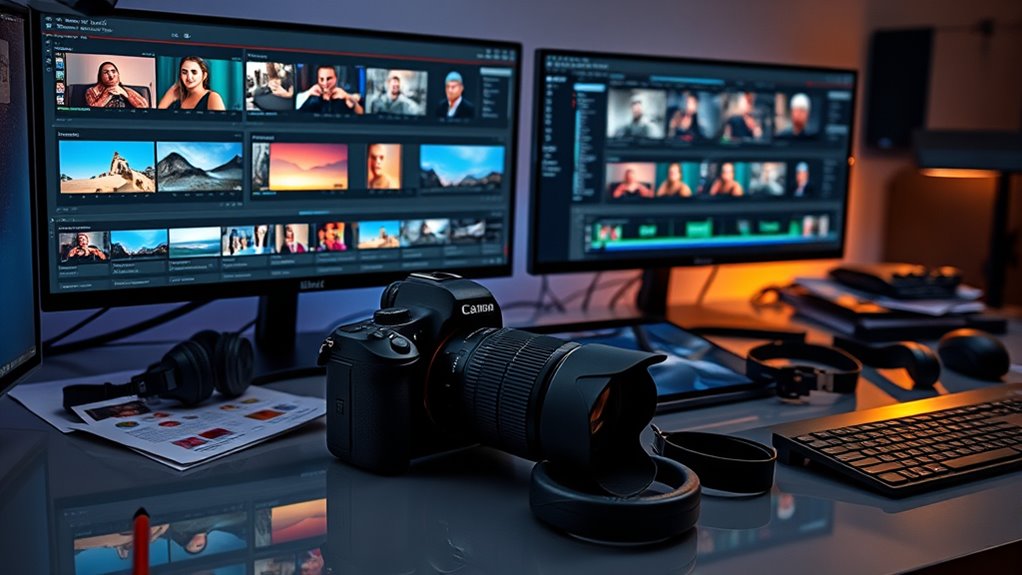A smooth proxy workflow begins with understanding how proxies reduce file sizes for fast editing without losing quality. You should match proxy formats and resolutions to your media needs, whether for easy browsing or detailed color grading. Proper setup—like organizing proxies and toggling between full and proxy files—saves time and prevents sync issues. By mastering these steps, you’ll uncover faster editing. Keep exploring to discover expert tricks that maximize your efficiency even further.
Key Takeaways
- Proper proxy setup balances quality and file size, ensuring smooth playback across different media types.
- Match proxy formats and resolutions to your editing software and hardware for optimal efficiency.
- Organize proxies with clear labels and dedicated folders to streamline workflow and prevent confusion.
- Regularly verify proxy and cache settings to avoid playback, color grading, and audio sync issues.
- Use keyboard shortcuts to quickly toggle between proxies and full-resolution files, speeding up editing.
Understanding Proxy Files and Their Role in Editing
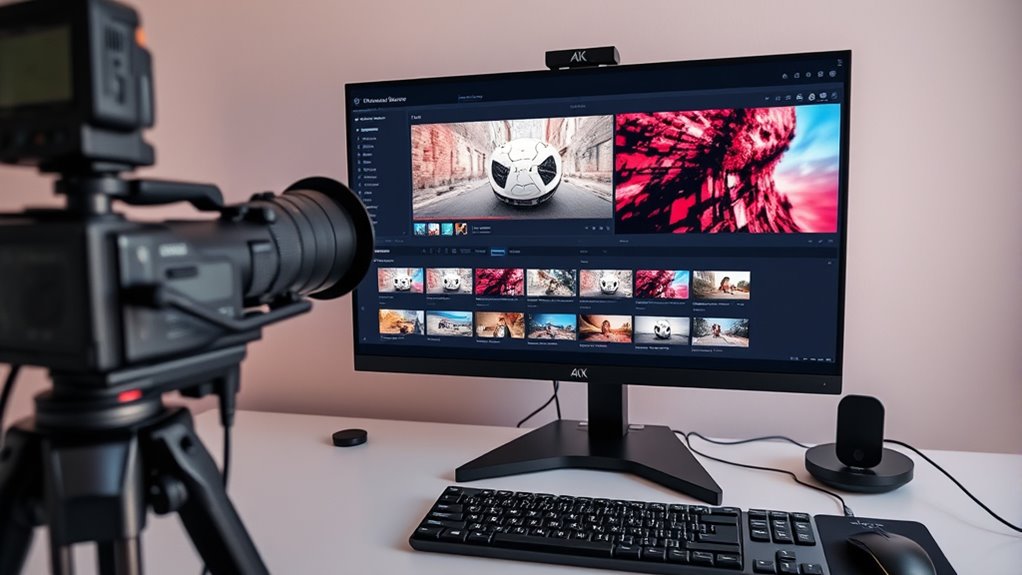
Understanding proxy files is essential for efficient editing, especially when working with high-resolution footage. Proxy formats are simplified versions of your original media, designed to reduce file size and improve playback speed. Using proxies allows you to edit smoothly without straining your system. When selecting storage solutions, consider options that can handle the additional proxy files without cluttering your workspace, such as dedicated drives or cloud storage. Proper proxy management ensures quick access and easy switching between proxy and full-resolution files. This setup minimizes lag during editing and accelerates your workflow, especially on less powerful machines. Additionally, maintaining good sleep habits can enhance your focus and productivity during editing sessions. By understanding proxy formats and choosing suitable storage solutions, you streamline your editing process and maintain high-quality results without sacrificing efficiency.
Setting Up and Creating Proxies for Different Media Types
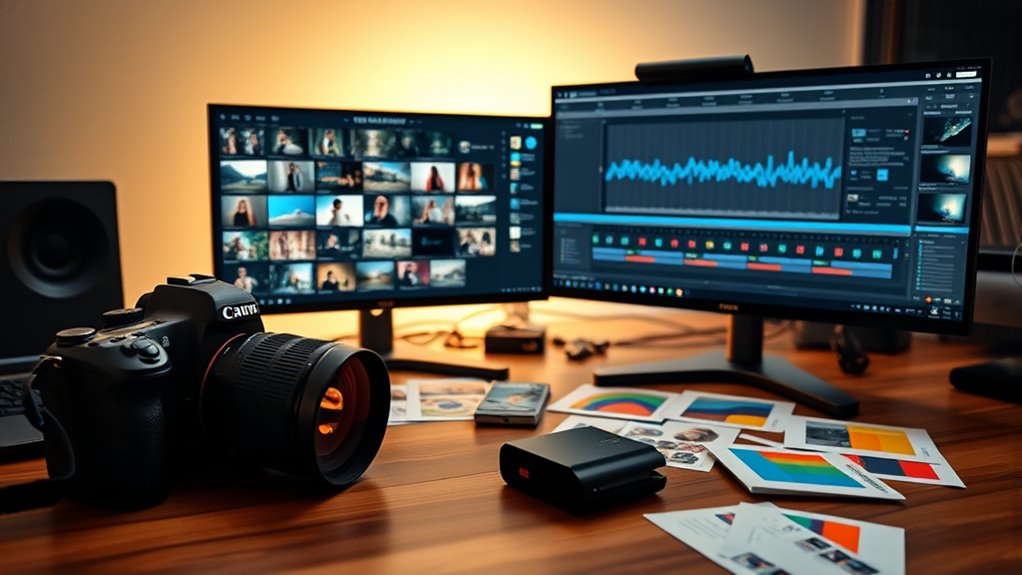
Creating proxies tailored to different media types involves selecting the right settings and formats for each. To optimize your workflow, focus on balancing quality and file size, which impacts storage management and color grading flexibility. Additionally, understanding the specific compatibility factors of your media types can help ensure smooth editing and playback. Here are three key steps:
Tailoring proxies to media types optimizes workflow by balancing quality, file size, and flexibility.
- Choose the appropriate codec and resolution based on your media type—lower resolutions for quick editing, higher for color grading.
- Use formats like ProRes or DNxHR for smoother playback, especially with 4K or higher-resolution footage.
- Customize proxy settings to minimize storage needs without sacrificing essential details, ensuring efficient management across diverse files.
Optimizing Proxy Workflows Across Camera Footage, Photos, and Videos
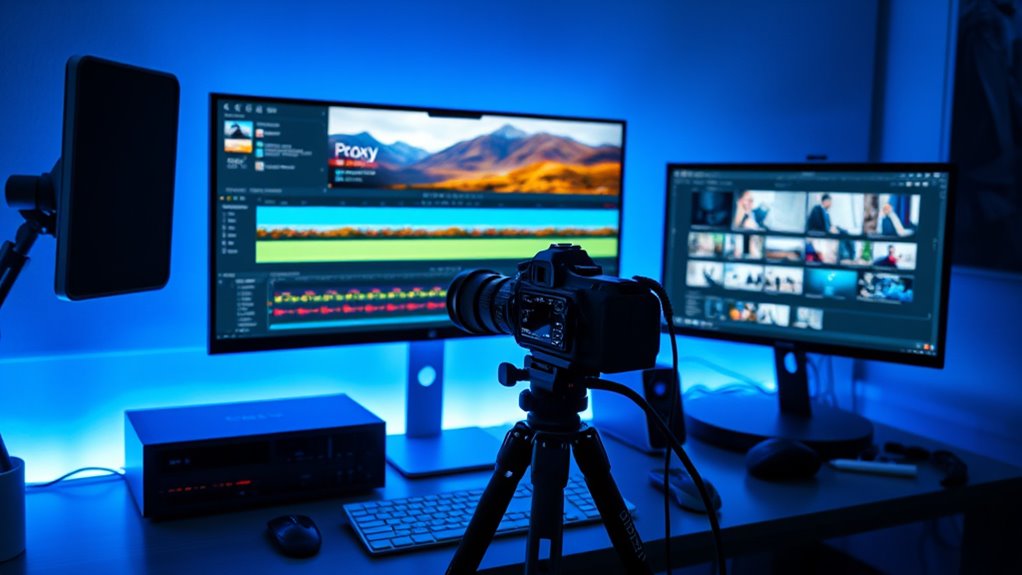
To optimize proxy workflows across camera footage, photos, and videos, you need to tailor your proxy settings to each media type’s unique demands. For footage requiring color grading, choose proxies with sufficient resolution to preserve detail while keeping file sizes manageable. When working with photos, use proxies that enable quick browsing and editing without sacrificing image quality. Videos with complex audio tracks demand proxies that support seamless audio synchronization, ensuring you can accurately match visuals and sound during editing. Adjust proxy formats to match your editing software’s capabilities and your hardware’s performance. Additionally, understanding the contrast ratio of your projectors helps you select the right display settings for accurate color and shadow detail, streamlining your editing process and ensuring consistent visual quality. By customizing your proxy setup for each media type, you streamline the workflow, maintain efficient editing, and reduce rendering times—all while keeping essential quality aspects like color grading and audio sync intact.
Troubleshooting Common Proxy Workflow Issues
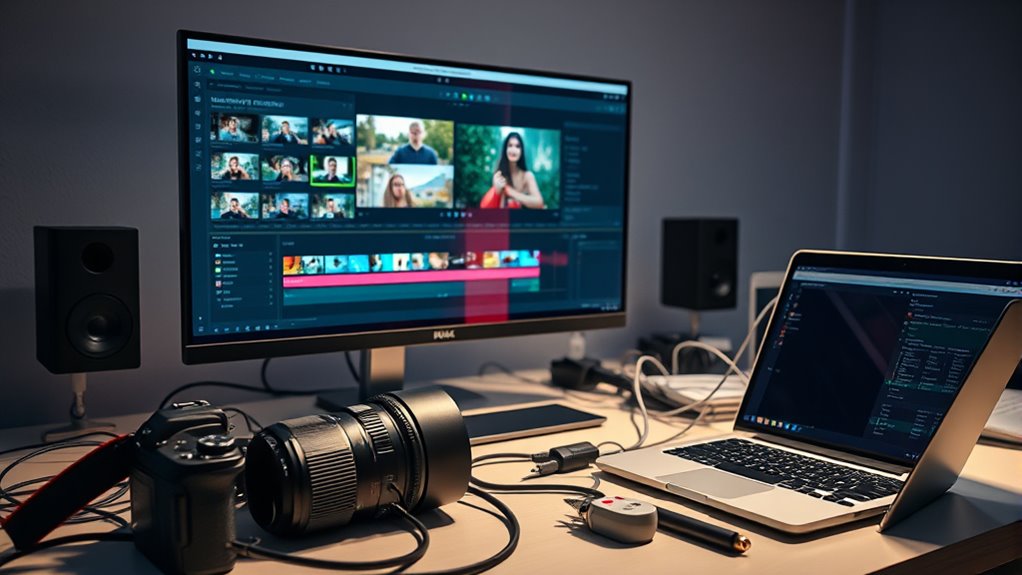
When proxy workflows encounter issues, troubleshooting begins with identifying the root cause of the problem. Common issues include color grading inconsistencies, audio synchronization errors, and playback lag. To diagnose effectively, consider these steps:
- Check your proxy file quality and format—poorly encoded proxies can cause playback issues that affect color grading accuracy.
- Verify audio synchronization—misaligned audio and video often stem from mismatched frame rates or incorrect import settings.
- Test your editing software’s cache and render settings—stale cache files can cause playback lag or display errors during proxy editing.
- Ensure compatibility with your Kia Tuning modifications, as hardware upgrades can sometimes influence media playback performance.
Resolving these issues guarantees smoother editing, consistent color grading, and precise audio sync, minimizing frustration and saving time during your proxy workflow.
Expert Tips to Maximize Efficiency With Proxy Editing
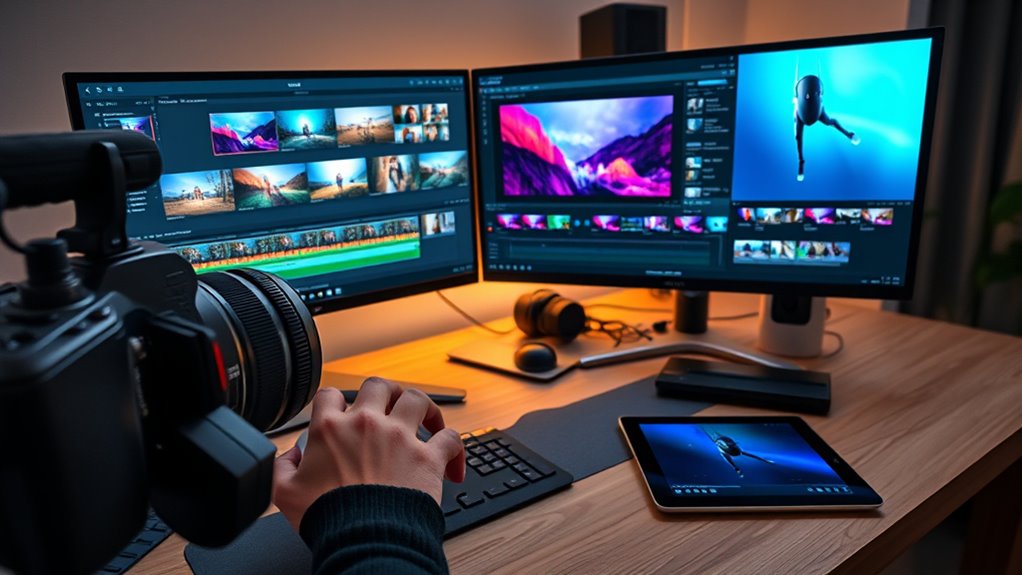
Maximizing efficiency with proxy editing starts with proper setup and organization. Begin by labeling your proxies clearly and keeping them in dedicated folders to streamline your workflow. Use consistent naming conventions to easily identify clips during editing, color grading, or audio synchronization. When editing, leverage keyboard shortcuts for quick toggling between proxies and full-resolution files. This speeds up tasks like color grading, where working on lower-res files saves time, without sacrificing quality. For audio synchronization, work with proxies to quickly align tracks before relinking to high-res files. Always double-check your proxy settings to ensure seamless playback and editing. Additionally, understanding content management principles helps you stay organized and prevents confusion during complex projects. By staying organized and utilizing these tips, you minimize downtime, optimize your editing process, and maintain high-quality output efficiently.
Frequently Asked Questions
Can Proxies Be Used for Color Grading and Detailed Editing?
Yes, proxies can be used for color grading and detailed editing. They’re great because they allow you to work smoothly without taxing your system, making it easier to fine-tune colors and details. You just need to make sure your proxies are of sufficient quality. When you finish editing, you can easily switch back to the original footage for final color grading, ensuring your project looks professional and polished.
How Do Proxies Affect Audio Synchronization During Editing?
Proxies dramatically reduce your editing headache, but they can cause audio delay and synchronization issues if you’re not careful. When you switch to proxies, your software might struggle to keep audio and video perfectly aligned, leading to frustrating sync problems. To avoid this, always verify synchronization after proxy creation, and consider relinking original high-quality files before final export to guarantee your audio stays perfectly in sync.
Are Proxies Suitable for 4K or Higher Resolution Footage?
Yes, proxies are suitable for 4K or higher resolution footage, as they substantially improve proxy performance during editing. They reduce the strain on your system, making playback smoother and faster. However, you should consider storage considerations, since creating and storing proxies requires extra space. Opt for efficient compression settings to balance quality and storage, ensuring your workflow remains seamless without overwhelming your storage capacity.
What Hardware Requirements Are Recommended for Efficient Proxy Workflows?
You should guarantee your hardware is compatible with your proxy resolution needs. A fast SSD or NVMe drive boosts read/write speeds, making proxy workflows smoother. Aim for at least 16GB of RAM and a multi-core CPU to handle high-resolution proxies efficiently. Your graphics card also plays a role, especially during playback and rendering. Upgrading these components ensures seamless editing, even with large proxy files, minimizing lag and maximizing productivity.
How Do I Seamlessly Switch Between Proxies and Original Media?
Did you know that editors switch between proxies and original media up to 10 times per session? To do this seamlessly, adjust your media settings for proxy quality in your editing software. Use workflow automation tools or keyboard shortcuts to toggle quickly. This way, you can efficiently switch between proxy and original media, maintaining smooth editing without sacrificing quality or slowing your workflow.
Conclusion
Mastering proxy workflows transforms chaos into clarity, turning raw footage into polished stories. While proxies simplify editing, neglecting their setup can hinder your progress, forcing you to revisit the basics. Balancing efficiency with attention to detail ensures your projects stay smooth and creative sparks remain alive. In the end, proxies aren’t just tools—they’re your bridge between complexity and control, allowing you to craft compelling visuals without getting lost in the technical maze.

